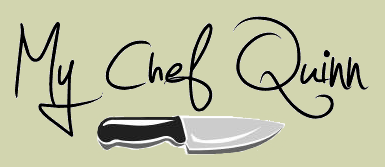In Part 2 of this series, I listed the 3-5 knives you should be sure to have in your kitchen. You can find these varieties in knife sets. Make sure you play close attention to what is included in the set. Often you will find the set includes knife types you will rarely use so you are better off buying separates. In the final article of this series I will cover care and storage of your kitchen knives.
One of the advantages to buying a set is that it often comes with a holder so you can store your knives. Safe and proper storage is definitely something you have to consider. Sharp knives should never be stored loosely in a kitchen drawer knocking around with other knives or utensils for two reasons:
- The blade can easily dull making it hard to work with.

- Reaching into a drawer for a knife can be dangerous.
A knife block or a magnetic bar on the wall are great ways to store your kitchen knives. If you don’t have counter space for a knife block or wall space for a magnetic bar, then a drawer is your only option. In this case you should invest in a knife guard for each knife or a wooden drawer insert with individual slots for each knife.
Knife care is equally important to proper storage. Knives should be hand washed. Dishwashing may cause your knives to bang against dishes or other kitchen tools which can result in nicks on the blade edge. Also the heat and detergent of a dishwasher may negatively affect the handle causing it to deteriorate or discolor.
Any knife with use will require sharpening over time. Some other tools to consider are those that will help you keep your blades sharp. One tool to purchase along with your knives is a steel. A steel will not sharpen a dull blade, but it will help align the blade edge before and after use.
While a knife blade edge may appear smooth, look at it under a microscope and you will see scores of tiny teeth. Each time you use the knife, the teeth splay and become misaligned. A steel will realign the teeth and help you to maintain a sharp edge.
Eventually, knives will need to be sharpened. You can choose to find a professional for this, or you can endeavor to do it yourself. One big benefit of doing it yourself is that you won’t be without your knives for a period of time.
To do it yourself you have a few manual choices. To sharpen your knives manually, you will need a sharpening stone. Stones use either oil or water as a lubricant. In general a knife’s edge is moved across a stone at an angle in an arc motion starting from the base of the blade moving to the tip.
The knives I’ve mentioned so far require an angle of 18 to 25 degrees. I think it would be fine to shoot for a steady angle of 20 degrees as you move your knife along the stone. You should complete the motion several times on one side and then the same amount of times on the other side.
Manual sharpening can also be accomplished by using one of the many tape dispenser sized sharpeners on the market. These tools use diamond, steel or ceramic material inside an angled opening through which you draw your knife. These are a little easier to use than sharpening stones since you don’t need to worry about lubricant or appropriate angles.
There are also good mechanical knife sharpeners on the market but be prepare to pay upwards of $125 dollars for those that are reviewed as effective.
I hope you’ve found this series helpful and you find a set of kitchen knives that will work well for you in your kitchen.

